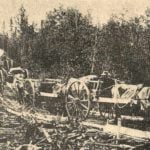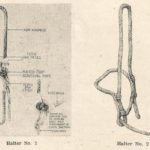
History
Pages from our past: Historical excerpts from Canadian Cattlemen
History: A Territories Shepherd – Part 3
Reprinted from the March 1951 issue of Canadian Cattlemen
History: Modern Horse Training – Pt. 3 “Teaching to Lead”
Reprinted from the March 1951 issue of Canadian Cattlemen
History: Rufus, the Outlaw
Reprinted from the March 1951 issue of Canadian Cattlemen
History: Breeding yearling heifers to Angus bulls pays off
Reprinted from the March 1951 issue of Canadian Cattlemen
History: Cattle, Then and Now!
Reprinted from the March 1951 issue of Canadian Cattlemen
History: Alberta’s Grazing Policy
Reprinted from the March 1951 issue of Canadian Cattlemen

History: West to the Setting Sun – Part 2
Reprinted from the February 1951 issue of Canadian Cattlemen
History: A Territories Shepherd – Part 2
Reprinted from the February 1951 issue of Canadian Cattlemen

History: Modern Horse Training – Pt. 2
Reprinted from the February 1951 issue of Canadian Cattlemen
History: New Beef Cattle Have Bison Blood
Reprinted from the February 1951 issue of Canadian Cattlemen



